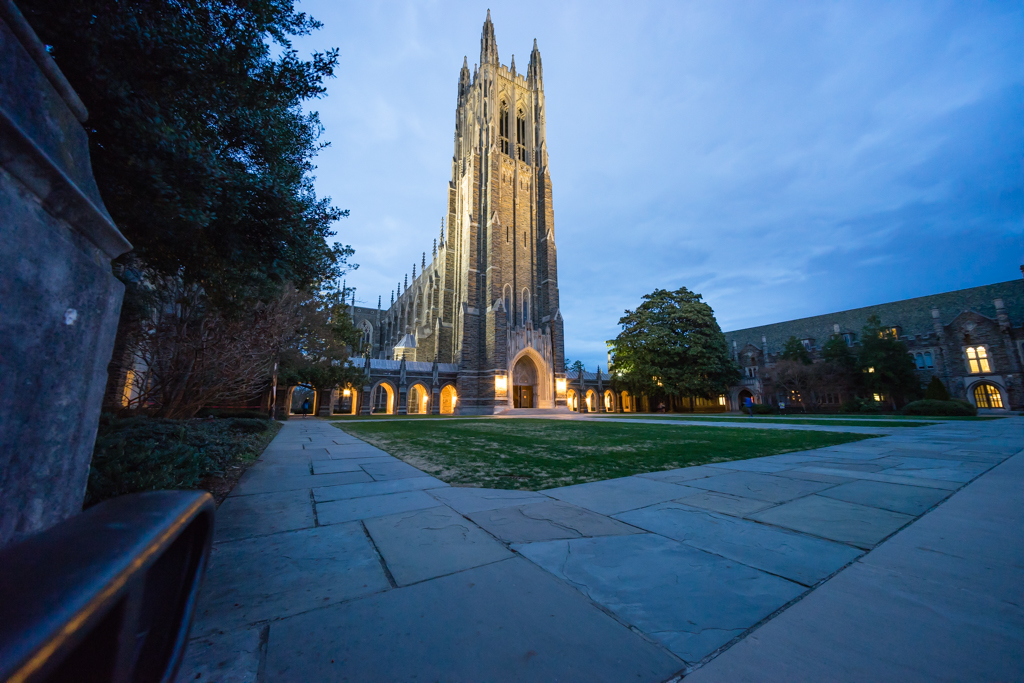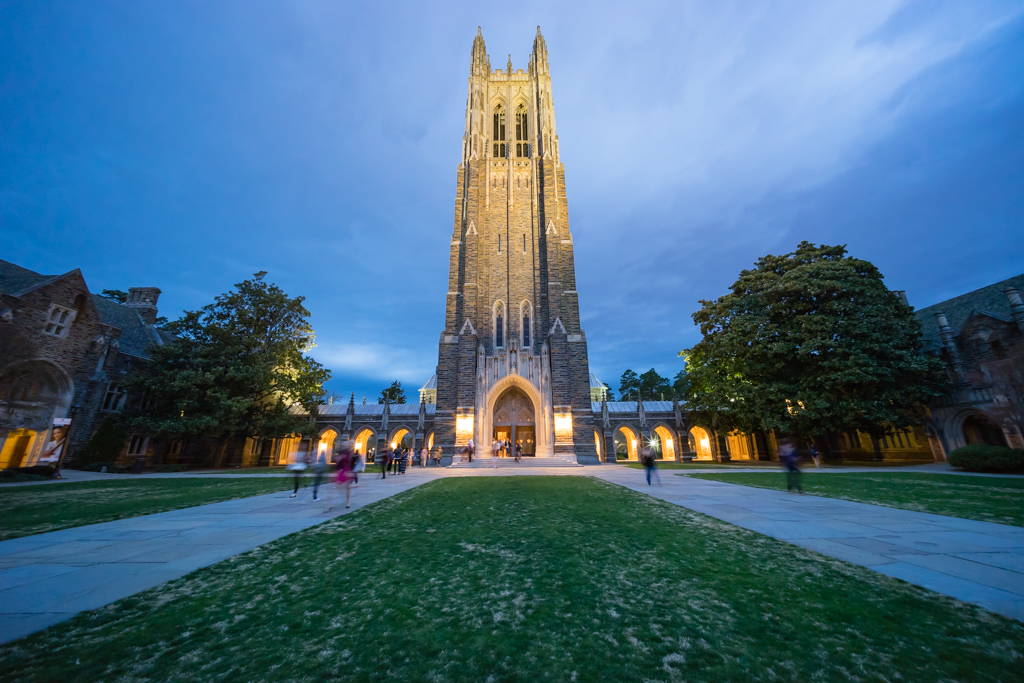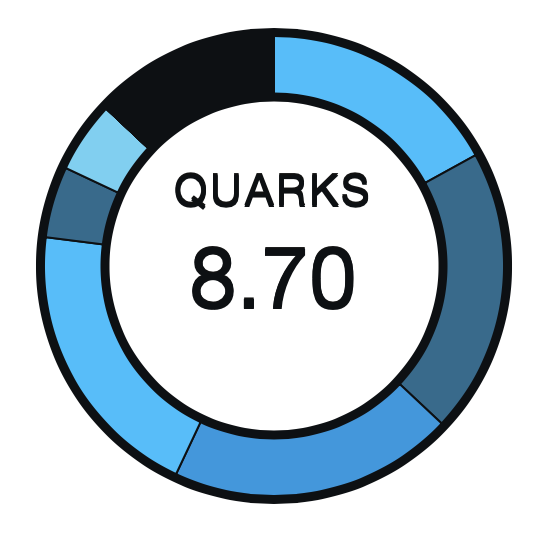
Quarks rating explanation here.
Hardware Design
Rating: 8.5/10
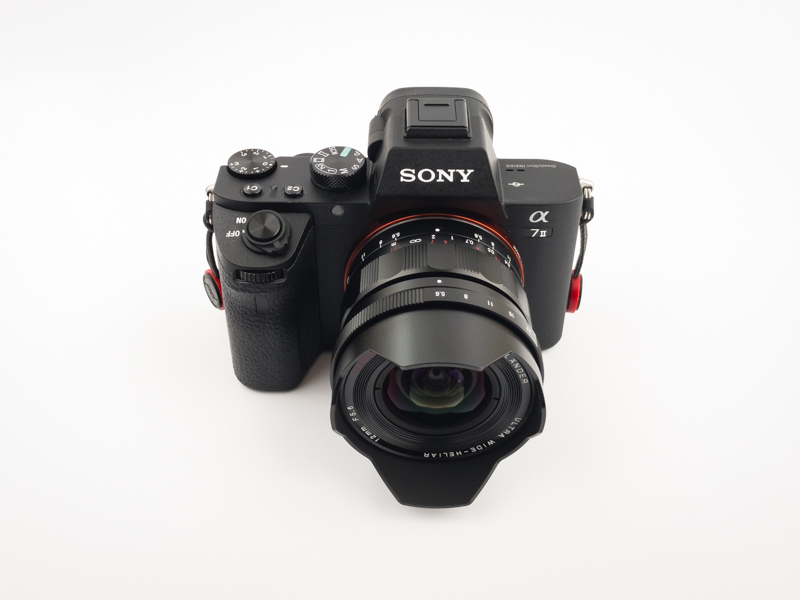
The 12mm f/5.6 is one of the three wide angle lenses that Voigtlander have produced for the Sony FE so far. I had the opportunity of reviewing the other two (here and here), and holding this lens feels terribly familiar, I would say it feels almost the same as the 10mm f/5.6.
True to Voigtlander’s fashion, design is elegant and functional. Every single hardware feature is there for a reason, and it’s adequately positioned: the aperture ring is placed towards the front, well separated from the focusing ring, which makes it really easy to operate without looking.
The lens cap attaches to the front element just like it does on the 10mm f/5.6: It’s held in place by friction, unlike the 15mm f/4.5 version; which is a more traditional pinch-style cap. As seen below, the lens is just lightly taller than the 15mm f/4.5, which is a very compact lens.
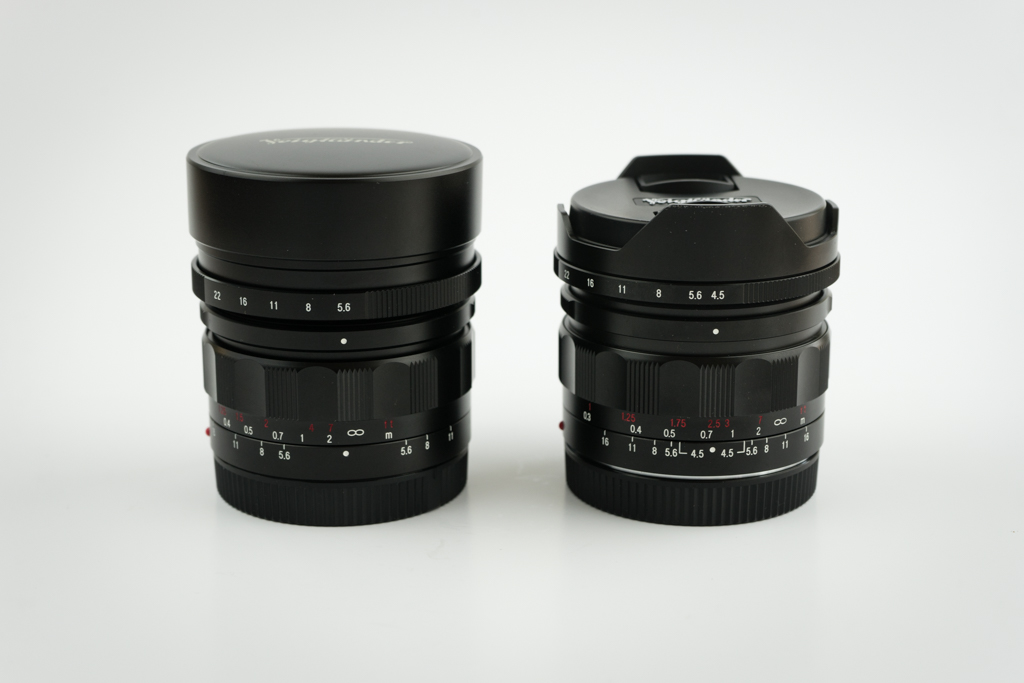
The focus ring is fully mechanical, meaning that it has both start and stop points as opposed to the focus-by-wire (i.e. focus ring turns freely in both directions) method used by modern auto-focus lenses. Mechanical focusing provides a better feedback and allows to achieve accurate focus easier and faster than focus by wire most of the time.
It’s worth mentioning that the camera can be set to activate the focus magnifier on the camera as soon as the focus ring is operated, which is a feature that some may find appealing. I personally prefer to setup one of the camera’s custom buttons close to the viewfinder to do so.
One disadvantage of Voiglander’s design, is the fact that the lens hood is permanently attached. That means that, no filters can be used on this lens.
Hardware Quality
Rating: 10/10
There is not much that can be criticized from the built quality perspective, other than the lens cap, construction is basically metal and glass. It feels as solid and well built as the Voigtlander 15mm f/4.5 or any other Zeiss lens made for the FE-Mount. This may not be a coincidence as Cosina Japan also manufactures several Zeiss lenses.
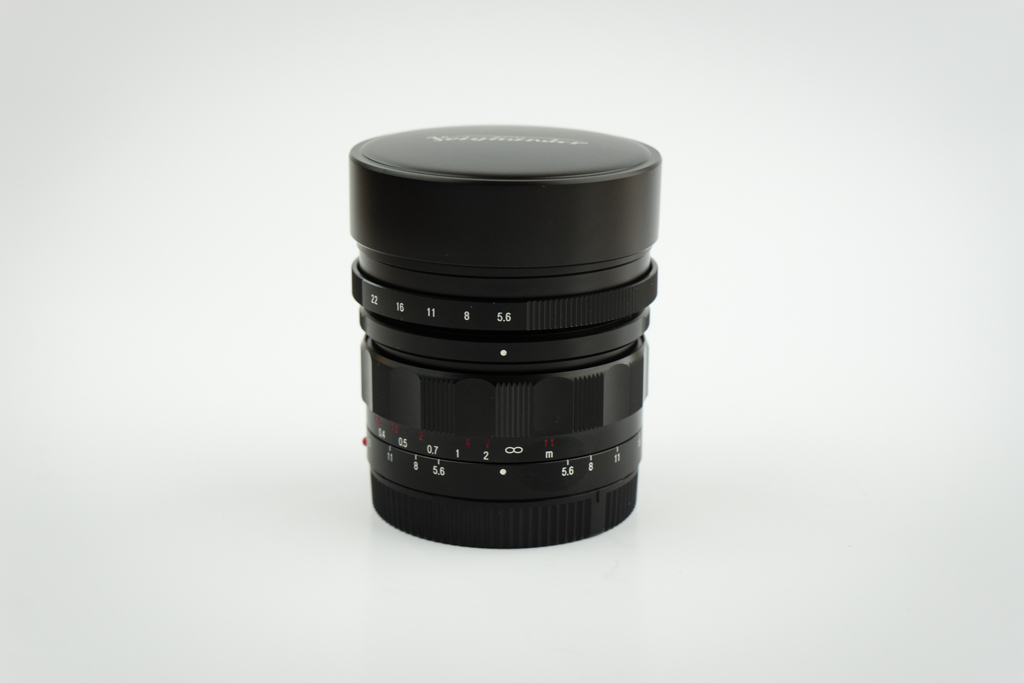
The focusing ring is as smooth as it gets, with just the right amount of friction to move from one end to the other. The aperture ring makes an audible and pleasant “click” when changing apertures, although I would say is less perceptible on this lens when compared to other Voigtlander lenses. The aperture ring can easily be de-clicked to improve operation and handling when filming video.
It is a fairly heavy lens for a mirrorless system, but it doesn’t makes the Sony A7 series cameras feel out of balance.
General Performance
Rating: 8/10
Ultra-wide angle lens are becoming my favorite lenses on the Sony FE mount. Since pretty much everything in front of the lens will be in frame, it forces the photographer to be creative and mindful of their surroundings. One of the nicest things about this lens is that it’s a rectilinear lens (i.e. non-fisheye), which is not easy to find at this focal length.
On the downside, at f/5.6 it’s a fairly slow lens, meaning that it’s not ideal for indoor use or poorly lit areas. Under those circumstances, a tripod is a must.
Sharpness / Corner tests
The Sony A7 II was setup on a tripod, ISO was set to 100, Steady Shot was disabled and the lens was focused to infinity. Several shots of the scene below were taken at different apertures (f/5.6, f/8, f/9, f/11 and f/22). Images are Straight Out of the Camera (SOOC), no post-processing was done unless specifically stated.
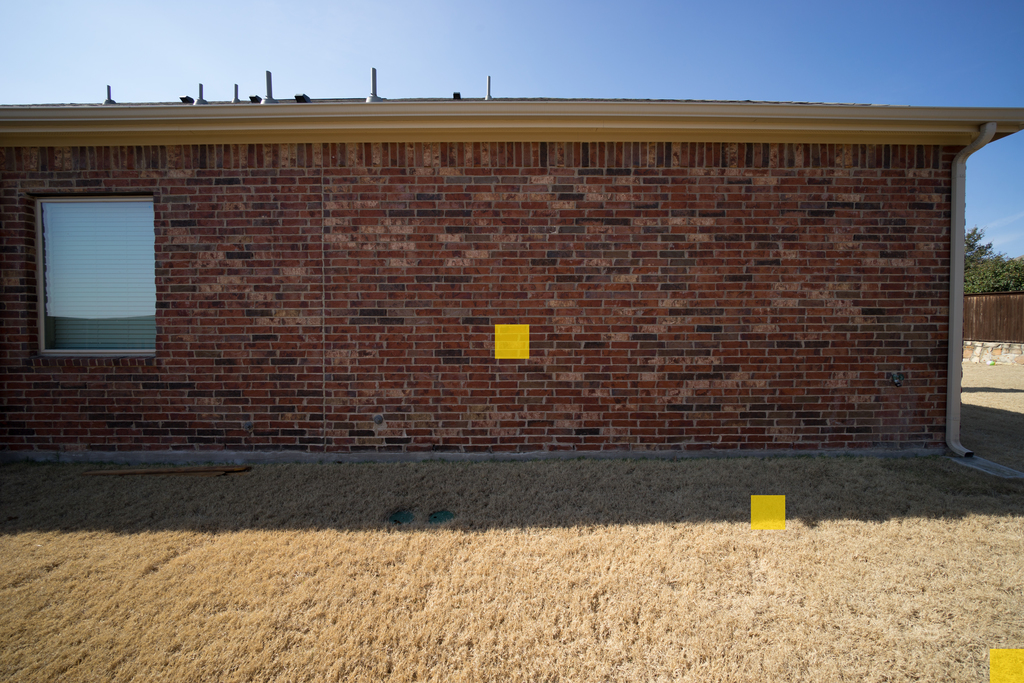
Three square samples were cropped from each photo at key frame locations: center, midframe and corner. Here are the results:
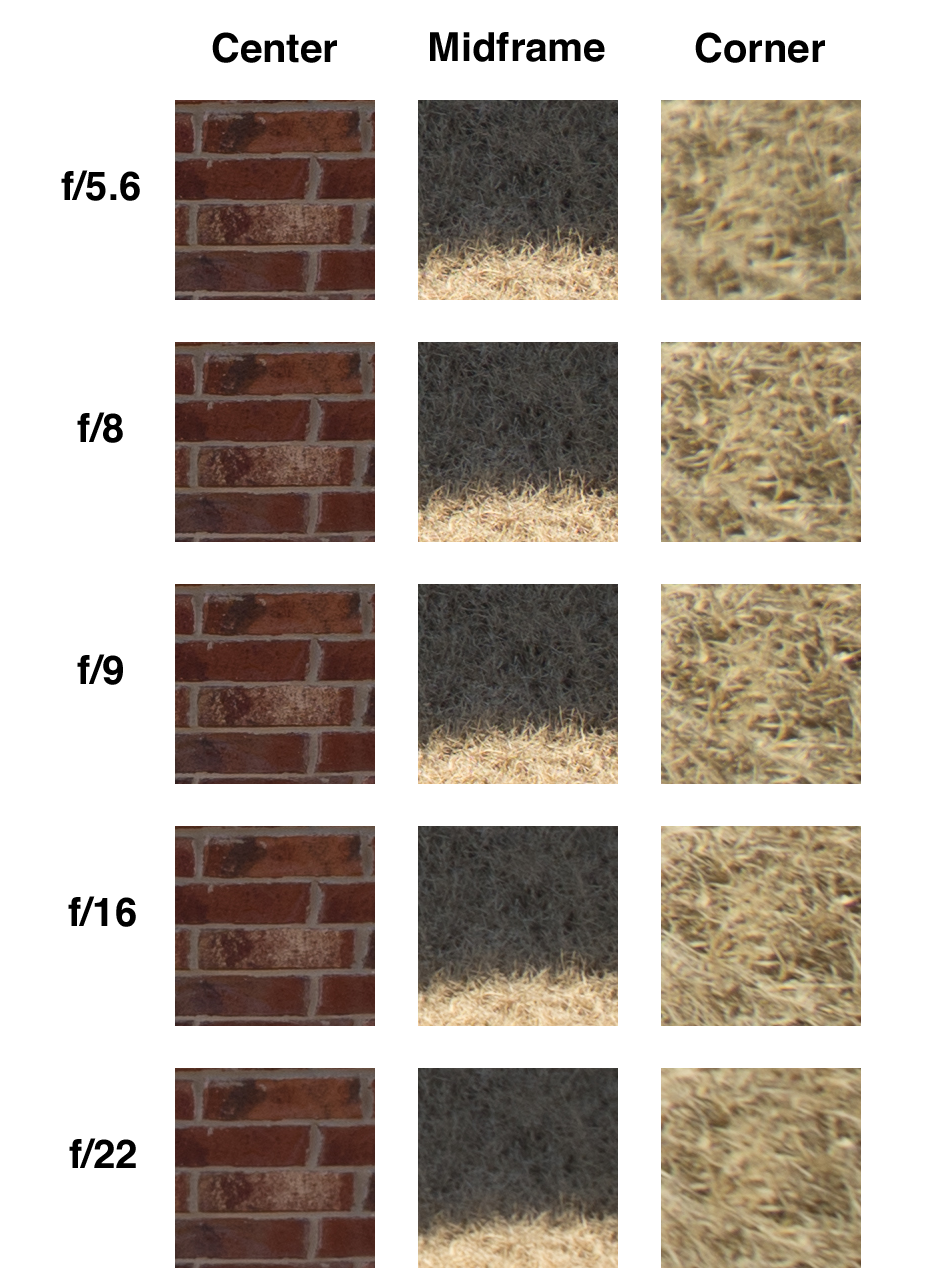
Any lens is expected to be the most sharp at the center and then degrade in quality (become soft) at areas closer to the edges. This is an unavoidable characteristic due to the nature of glass and optics. The effect is also more prominent when using extreme apertures (in the case of this lens: f/5.6 and f/22).
In the case of the Voigtlander 12mm f/5.6, it’s the most sharp at f/8 and f/9 (the latter being the sharpest aperture) throughout the frame. The midframe is surprisingly sharp when wide open (at f/5.6) and remains like that up to f/16, being notably soft at f/22. Corners are sharp from f/9 to f/16. In summary, this lens has a better sharpness performance than the Voigtlander 10mm f/5.6, and almost as good as the Voigtlander 15mm f/4.5.
Contrast
Straight out of the camera, contrast performance is excellent, very similar to that of the Voigtlander 15mm f/4.5 version. This is true throughout the frame and at all aperture values. Obviously, this can further tweaked on post production via Lightroom.
Distortion
The Voigtlander 12mm f/5.6 exhibits minor distortion, which is really impressive for such a wide lens. Images are almost perfect to be used Straight Out of the Camera (SOOC), and they can easily be corrected in Lightroom by enabling Profile Corrections in the Lens Corrections section. Although there is currently no official lens profile for this lens in Lightroom, the one offered for the 10mm f/5.6 version proved to be equally effective.
Move the slider below from left to right to see the difference before and after enabling the lens profile correction. Also, note the change in vignetting towards the edges (more on that below).
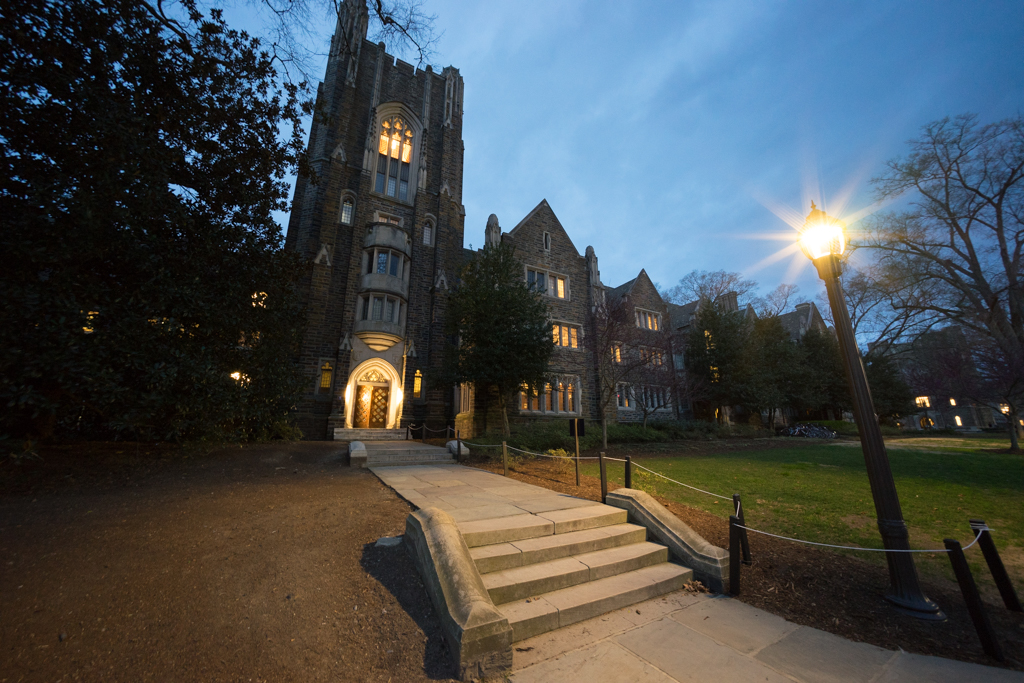
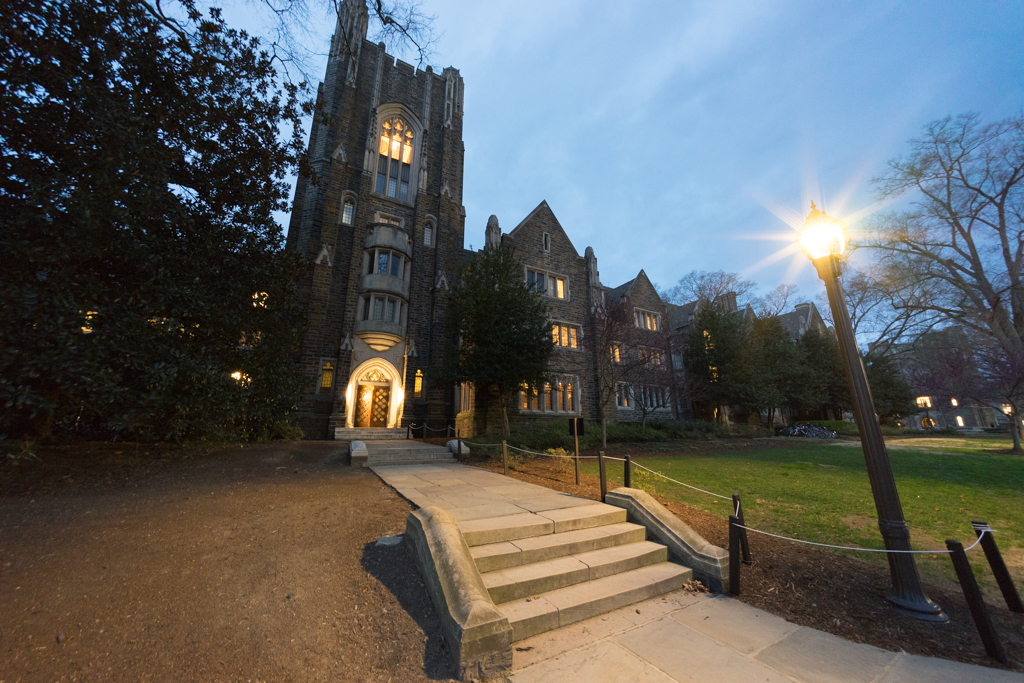
Vignetting
Vignetting is the term given to the fact that, depending on how wide a particular lens is, it may darken the edges of the image. This is also accentuated at certain aperture values.
As seen in the picture above, the case of the Voigtlander 12mm f/5.6, presents some vignetting, which is just expected on a lens with such a wide focal length. It’s worth mentioning however, that it’s much controlled than the vignetting presented by previous Heliar generations (For Leica M mount).
Price
Rating: 8/10
At $999 this is not a cheap lens. However, there aren’t many native ultra-wide options for the Sony FE mount, and the list gets even shorter when looking for focal lengths below 15mm. Voigtlander seems to be dominating this market with their latest lenses (again, I’m referring to native lenses). Their 10mm and 15mm offerings are top performers with prices very similar between them.
Other options close to this focal length are the soon-to-be released Laowa 12mm f/2.8 ($979) and the Irix 11mm (unknown price), but those are not native lenses and although they may be adapted for the Sony FE mount, they would add volume, weight and most likely photo EXIF information would be lost. At the end, it wouldn’t be an apples-to-apples comparison.
A special shout-out to CameraQuest, official Voigtlander distributor in the USA. Their customer service is fantastic: straight forward and concise communication without automated emails/tickets, fast response and exceptional support. I have bought lenses from them in the past just because of that and will continue to do it in the future.
Ease of Use
Rating: 10/10
This lens is as easy to use as any other manual focusing lens. Actually, I would say it’s easier to use: since it’s such a wide angle lens, setting the focus ring to infinity would put everything beyond 2 mt. (6.6 ft) in focus. That means you can set the camera in Aperture Priority, se the aperture ring as needed and you are ready to shoot. It doesn’t get easier than that (.. on a manual lens, that is).
Other Reviews
Rating: ?/5
At the time of writing, there are no reviews in either Amazon or Adorama for this lens. Therefore, no additional ratings have been used when calculating the Quarks Rating.
Sample Pictures
